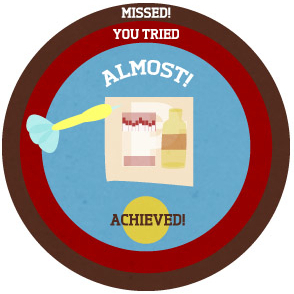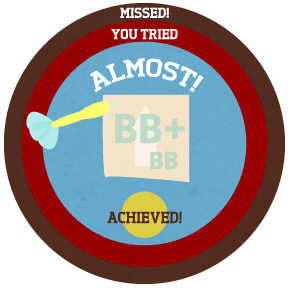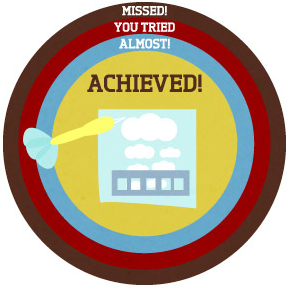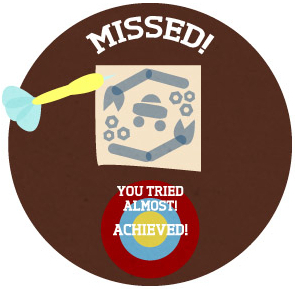SUMMARY
This is AI generated summarization, which may have errors. For context, always refer to the full article.

MANILA, Philippines – At his 3rd State of the Nation Address (Sona) on Monday, July 23, President Aquino will trumpet the economic gains his administration has achieved since taking over the country’s helm in 2010.
Constantly referred to as “Aquinomics,” his administration’s good governance-led economic agenda has led the country into wild economic growth swings — from 7.3% in 2010 to 3.9% in his first full year in 2011, to a surprisingly high 6.4% in the first quarter of 2012, making it the second fastest growing economy in Asia next to China.
Let’s have a look back on what were missed and achieved during the past two years, and look forward to what likely lies ahead.  Sin taxes, almost achieved
Sin taxes, almost achieved
For the first time in around 15 years, a sin tax reform bill made it through the House of Representatives, the bastion of opposition and industry lobby, on June 6. The popular president, himself a smoker and consumer of a “sin” product, has put his administration’s weight behind the passing of the sin tax reform bill since 2011, a year after he took office based on a campaign promise of, among others, no new taxes.
The additional P32 billion revenues this reform bill will raise is lower than the originally pushed P60 billion. But this piece of legislation is a step closer to being enacted in a law that will make cigarettes and alcohol, both behind top killer diseases in the country, less affordable. Previous administrations have tried to do the same with sin taxes — a legislative piece where politics and economics traditionally intersect. The unpopular Arroyo administration, once faced with a potentially debilitating fiscal ills that badly needed additional revenues, failed in several tries. “We were up against a very strong lobby,” former Finance Secretary Margarito Teves once intimated to Rappler.
Current Finance Secretary Cesar Purisima has been optimistic about the bill’s passing since 2011, stressing basically the same message as Teves’: More resources from excise taxes on sin products will benefit healthcare spending budget and tobacco farmers. The Aquino government, which is actually enjoying a healthier fiscal position than Arroyo’s, focused only on sin taxes in its economic-legislative agenda. Other priorities, including the rationalization of financial incentives as well as the much-hyped additional revenues from mining reform moves, have been relegated to the sidelines. A former House committee head and partymate that did not toe the line in passing the sin tax bill was sidelined as well.
The next battleground is the Senate. And the target is to enact the sin tax reforms before the 2013 elections.  Credit rating upgrades, almost achieved
Credit rating upgrades, almost achieved
Among the many targets of the Aquino administration that seemed impossible to achieve in the past is an investment-grade credit rating by 2016. It’s only 2012 but meeting that goal doesn’t seem that impossible anymore. International credit rating agencies, like Standard & Poor’s (S&P), Moody’s, and Fitch, have given the Philippines several upgrades in both outlook and credit ratings. S&P has recently raised the Philippines’ long-term foreign currency credit rating to within one rung of investment grade.
These do not only reduce the cost of borrowing for the Philippines, an active and mature debt market player, but also a vote of confidence in how the Aquino government is handling the macroeconomy of the country.
One number is helping shape that confidence: the budget deficit.
Internally, underspending of the Aquino government has been vilified for shaving off some steam in the country’s pace of growth. But to an outsider, a budget gap of less than P300 billion or a little over 2% of the entire economy’s gross domestic product (GDP) is good news. Fund managers in the US or London going through their spreadsheets peppered with western economies’ worrisome deficit-to-GDP ratios, some going over the cliff with over 100%, want to put their money where they will be paid back. The Philippines’s 2% ratio looks good amid all that.
How to sustain that ratio — as the Aquino government keeps up with its other promise of spending more on key infrastructure this and in the coming years — is the other side of the coin.  Infrastructure projects via PPP mode, missed
Infrastructure projects via PPP mode, missed
In his first Sona in July 2010, President Aquino touted the public-private partnership (PPP) mode of pushing capital intensive and high-impact infrastructure projects as a cornerstone of his economic growth targets. He and his economic managers even made a big splash in November 2010 and in succeeding roadshows overseas that, through the PPP mode, the Philippines is “open for business” again. Translation: level playing field for investors and transparent bidding process.
What was likely not factored in were hiccups, including succeeding resignation of the transportation secretary who was at the focal point of most airport projects lined up for PPP implementation. Reality also bit. For example, feasibility studies take time to finish, skill sets need to be honed, and that the bureaucracy needs to be beefed up and cleaned up first before taking the next steps, such as the bidding process.
The delays of and the changes in rolling out the rail, road, and airport projects in the PPP list have been costly.
It was one of the major factors why the Philippines drastically slowed down from a robust 7.3% in 2010 to 3.9% in 2011. The other factor is the global economic woes that dampened demand for Philippine exports. But the latter is beyond our control. The PPP delays — or even the permutations after, including tapping low-cost overseas development funds — are within the government’s control.
So far, only one small PPP project has been passed: the Daang Hari-South Luzon Expressway Road bid out in December 2011. Construction of that 4-kilometer road is not even in full swing yet. Half of 2012 has passed and the bidding process for only two other big-ticket projects — the P60 billion NLEx-SLEx Connector Road and P12 billion NAIA Expressway Raod — are gaining ground.
Also, the delays in the airport projects will likely hit Aquino’s own tourism strategy. The 10-million tourist arrivals target by 2016 is largely hinged on improving access to island destinations through bigger airports there that can accommodate more passengers or bigger aircraft. The 4.2 million tourist arrivals expected this 2012 are still mostly via a time-consuming and costly route that involves connecting flights at the congested Manila airport.
Infrastructure and tourism are two of the key legs of economic growth the Aquino government is depending on.  Open Skies regime achieved
Open Skies regime achieved
To his credit, Aquino government did in one stroke what the Ramos administration tried but ran out of time to do, and the Arroyo administration half-heartedly pursued: liberalize the airline industry. President Aquino signed Executive Order No 29 in March 2011,
putting 5 airports outside of congested Manila airport under a “pocket” open skies regime. This means foreign carriers can mount unlimited and unrestricted flights at airports in Clark, Boracay, Puerto Princesa, Bohol and Cebu.
It’s a brave policy call that local airlines, like giants Philippine Airlines (PAL) and Cebu Pacific, resisted. But the government stood firm. Case in point: when PAL’s budget unit, AirPhil Express, protested that the Boracay flights of Korean carrier Jin Air are “unfair” given the Korean regulatory counterparts’ resistance to issue a similar right for the Philippine carrier to mount new flights in the same route.
Liberalizing this industry is part of the grand tourism strategy of the Aquino government. Tourism is the other key source of economic growth expected to complement OFW remittances, which fuel the consumption-led economy of the Philippines.
Better and more choices of air access address the fact that Philippines is an archipelago and almost 100% of tourists arrive by air. By opening up air access, the expected economic impact is likened to the deregulated telecommunications industry: more players (airlines) means more customers (passengers) and lower fares.
The lower fares was the key behind the dramatic rise in air travelers. Aggressive promotional fares of local airlines to destinations in the Philippines hiked air traffic by over 13% to 18.76 million in 2011, data from Civil Aeronautics Board (CAB) showed.  Auto manufacturing, missed
Auto manufacturing, missed
In 2011, a new wave of manufacturing investment opportunity cropped up when factories in Thailand were inundated after days of rain, and Japanese businessmen grappled with supply gaps and electricity supply after the earthquake-tsunami twin disasters.
But the Philippines’ challenges were aplenty: a lack of vibrant raw material supply chain, high electricity costs, skilled but more expensive labor pool, as well as a local market smaller than Thailand, Malaysia, and Indonesia.
So when Ford announced this year that it is closing its auto factory in the Philippines, that highlighted a key gap in the economic story of the Philippines: we are hardly in the manufacturing map of investors whose funds have helped create jobs. Foreign direct investors tend to stay for a long haul, unlike the “hot money” that make their way to the stock markets. Ford also cited changing tax and tariff picture in Asean.
Some Korean and Japanese businessmen who were also looking at hedging their bets against China still don’t have the Philippines high up in their list. “The economic policies are not geared towards creating a manufacturing sector,” a fund manager once explained to Rappler, highlighting that the Philippines is perceived to be stuck in just one or two pillars of growth: remittance-led consumption spending and BPO-led services sector.
“The Philippines can grow with what it has. But you want a more diversified and deeper economy. The Philippines has yet to achieve that,” he said. – Rappler.com
Click on the links below for more:
Add a comment
How does this make you feel?
There are no comments yet. Add your comment to start the conversation.